month in review: september in the olive groves and in the big cities
I got to tour an award-winning olive grove to scout the best places to bring artists and writers for plein air sessions- and that was just the start of the exploring.
This month, my friend Nuria, owner of Albium, the award-winning olive oil company, took me on a tour of their olive groves. And yes, when I say award-winning I don’t mean some piddly little local contest, which on its own would still be a feat, because we are after all in the middle of Spain, in an area that has a Lot of olive groves. It’s not a small selection of oils to compete with, even just in our region. But no. I mean winning international and national prizes. First place in Spain. Third place in the world. THAT kind of olive oil. You feel me?
So one beautiful sunny afternoon, she’s driving me around all their various olive groves, as the trees are being prepared for harvest season. There’s a beautiful olive grove area with a nice space to gather, overlooking L’Albi, and she wants to be sure I know about it. Then we drive up a hill, and park the car to walk up to the top of another hill that overlooks the valley of olive groves, with L’Albi more in a distance. This area, she says, would be “fatal” (Not fatal like deadly. Fatal like “killer good.”) for our guests or for camping, to wake up in the morning to that view when the mist is still low on the mountains. Next, we visit a newer grove, the trees just a couple years old, all in rows to accommodate the new way of growing and harvesting olives with an odd-shaped tractor that drives right over a closely-planted row of trees, like legs spread wide for a game of frog, making harvesting faster. We’re not going to this grove for its agricultural advances though. We’re going because it has one of the few remaining “cabanes de pedra seca,” or voltas as they’re sometimes called. These are little vaulted stone cabins, built hundreds of years ago for farmers to sleep in during long days so they wouldn’t have to walk all the way back home from the terreno at the end of the day and then all the way back again early the next morning. You see, farmers don’t live in a house surrounded by their land here, necessarily. A lot of them live in the nearby pueblo, and their land may be 5-10 kilometers away from their house. So in the busy season, Spanish countrysides are ready with little field casitas. Many are falling down in ruin, even fewer remain of the vaulted stone kind, built into the side of the hill to keep cool. Well Nuria’s land has a beautiful one, absolutely beautiful. And she proclaims I needed to see it. It’s along a long stone wall, in a terraced land, and down the way from it is an “ice house,” you know, a nearly-buried stone container for ice- they’d freeze water in the winter, then store it in the ice house for use in warmer months, to keep food from spoiling. So that bit of land, it has modern farming practices, but it also has ancient practices still well preserved, like an ice house and a volta. It’s incredible, and just as incredible is that she is showing it to me so I can bring artists and writers there for plein air sessions, whenever we want.
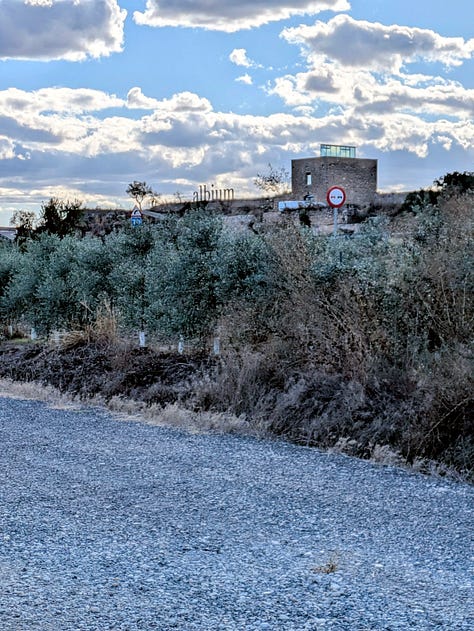
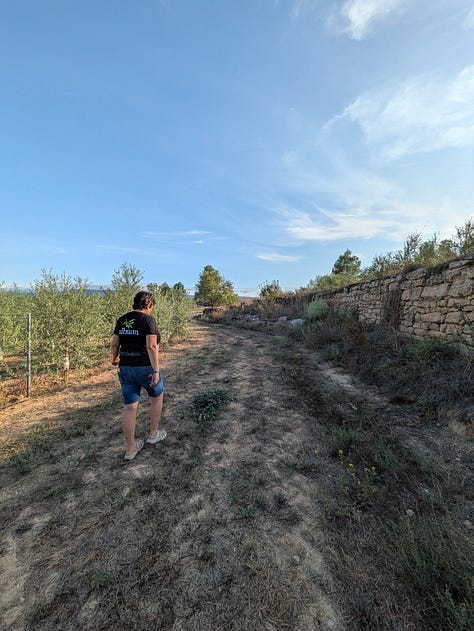
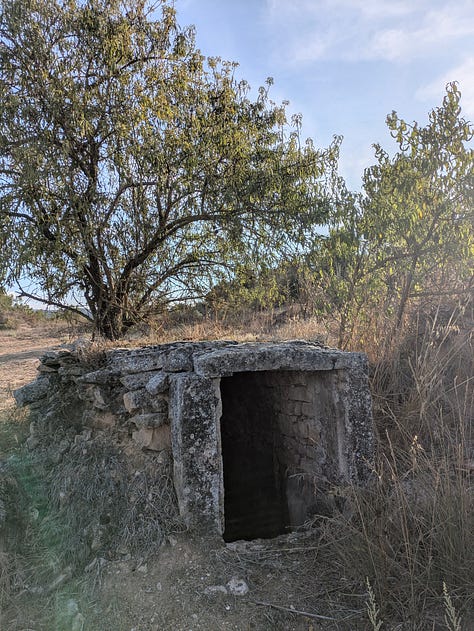
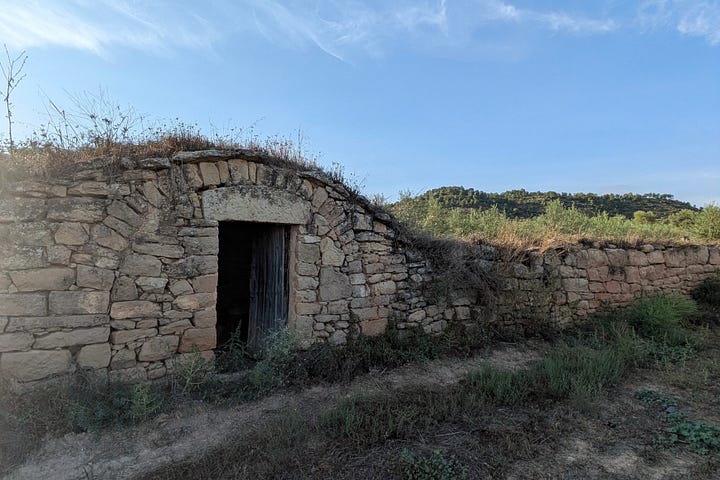
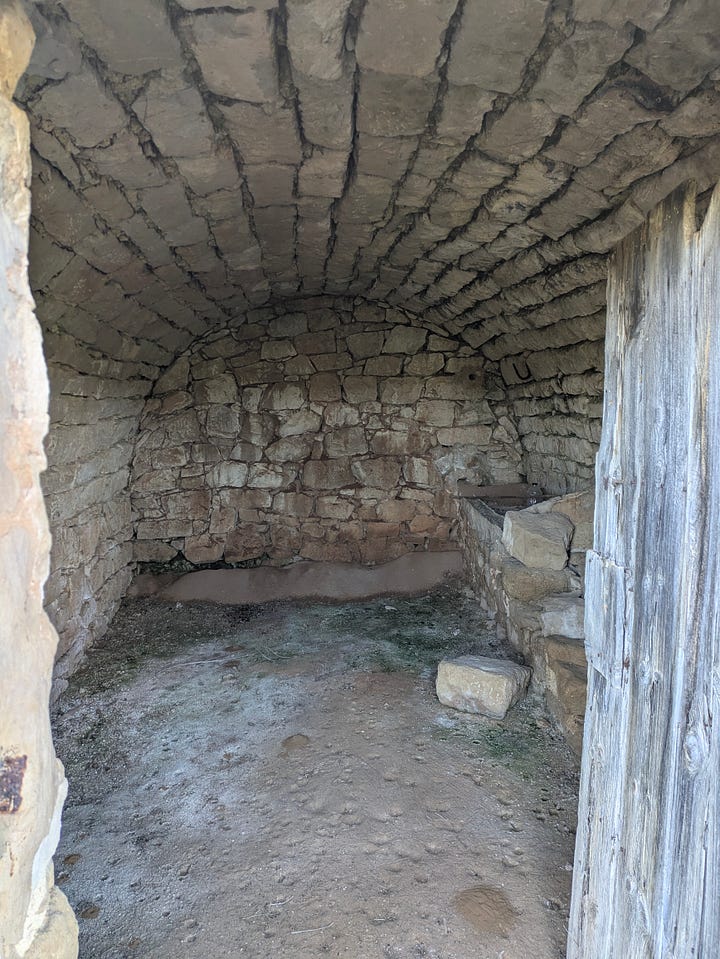
But then, oh then: I needed to see the best place to see a puesta del sol, a sunset. It’s over in another olive grove, this one with a lot of terracing as it climbs up a hill, but that’s what gives it that great view. Off to the far left in the distance are the windmills, which always fill me with hope for the future with their passive energy production. Past them L’Albi is far enough away that it only takes up a small portion of our vista. Then across acres and acres of fields to the right, we get to the sunset. There’s a big rock up above us that Nuria tells me has a nice flat top, perfect for sitting up there with a picnic to watch that sunset. Come out half an hour before sunset, get yourselves all set up and ready to really properly enjoy it, she tells me.
All of this: she offers without wanting anything in return. Of course we can go onto their land whenever we want, she says. We can use it and bring strangers with us. Spaniards, or at least Catalans, or maybe just people in our area, don’t have this attitude of private property. Yes, they own the land. But the land is welcome to be crossed or visited by others. It’s nature. You don’t keep it all to yourself. It’s too good to keep people out. It’s meant to be shared. Nature is generous, and so should we, the caretakers of the land, be in response. Nuria, I have a feeling, is even more generous than the average Catalan. She and her husband Jaume? They are generous, warm, hard-working people. People of the land. Some of my favorite people I’ve met here. What an honor it is to be able to share the richness of their land with others.
I have dreams of writing sessions, creative journaling, and yes just sitting and watching a sunset perched atop that flat rock. My dreams are for artists, yes, but they are so much more than a painter standing in a field with their easel or sketching quick captures for paintings later in their studio. Oh, no. These plein air sessions are for so much more than professional artists. They are for anyone who wants to take in beauty, and create some beauty in response. Capture just a little sliver of that goodness to take home with them. Maybe it will be an oil masterpiece, sure. But maybe it will be a few cell phone photos and writing down what they see in front of them. Maybe it will provide the quiet and peace for working on your own project, in a new setting, away from everything. Maybe… maybe you have an idea that I haven’t even dreamed up yet.
Like I said: what an honor.
Oh, and also: buy their olive oil. It’s incredible.
Along with my tour with Nuria of her olive groves, September was a full month.
I went to my first journaling session with Marusha of Girls Who Write (who is also the founder of Barcelona Journaling Festival, can’t wait!) in Barcelona. What an incredible experience: I filled 14 large journal pages in one evening!
I started a 100 day challenge with London Writers Salon, this one for the final 100 days of the year. I’m making marks in my journal every day and sharing it here in the notes, as well as on Instagram.
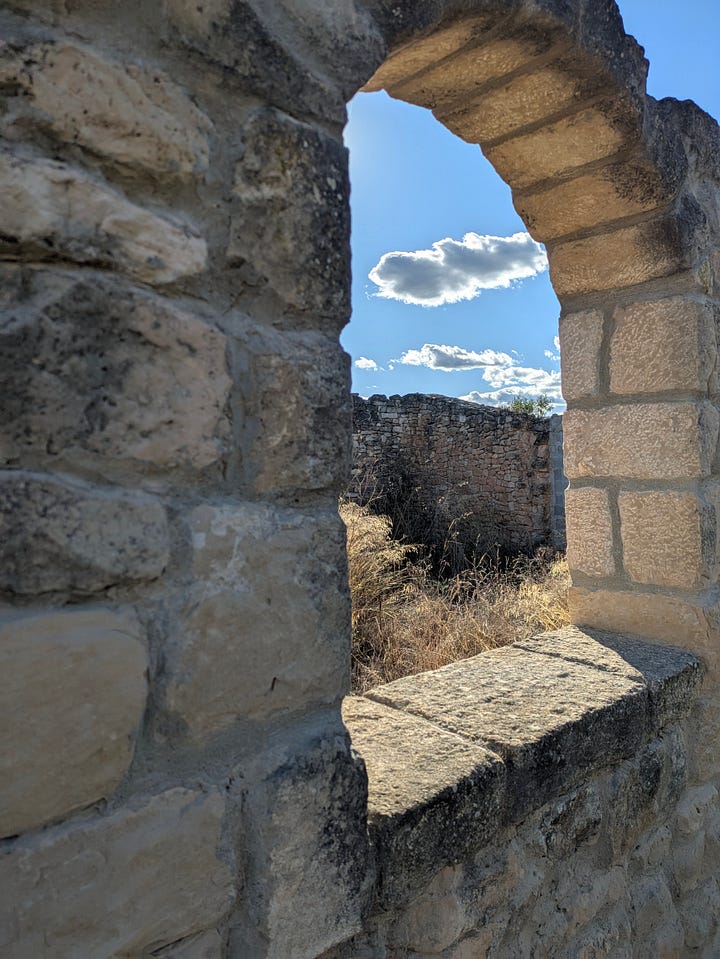
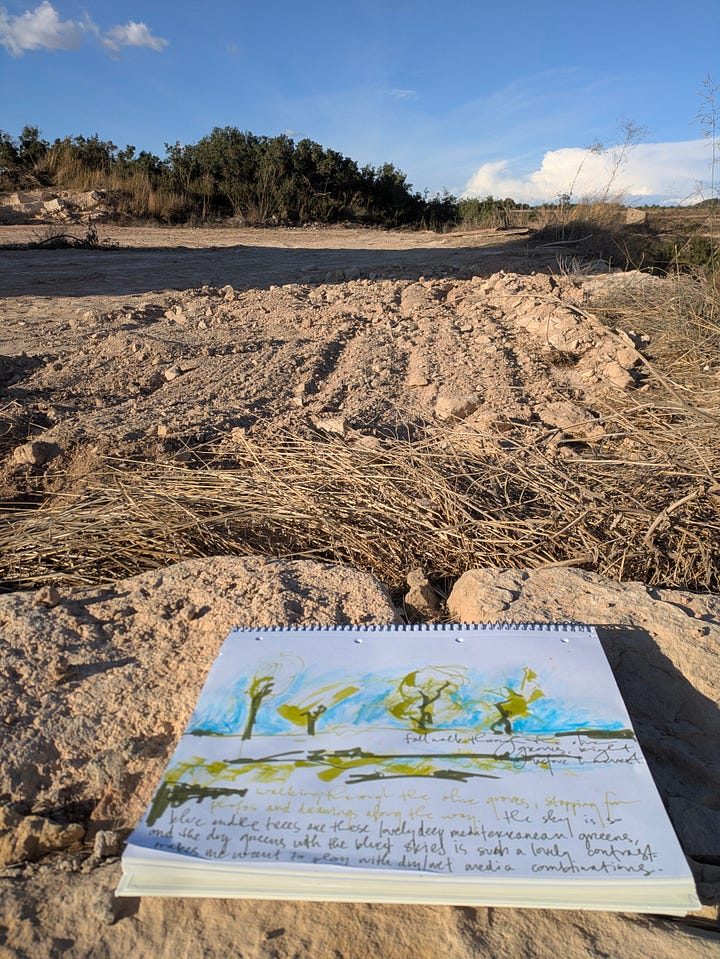
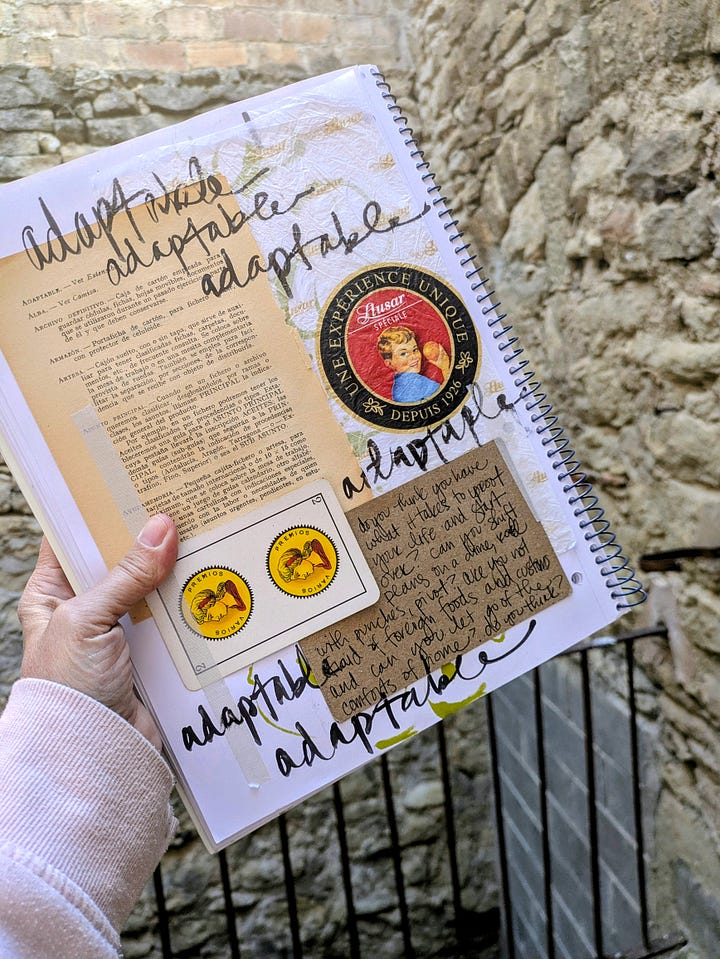
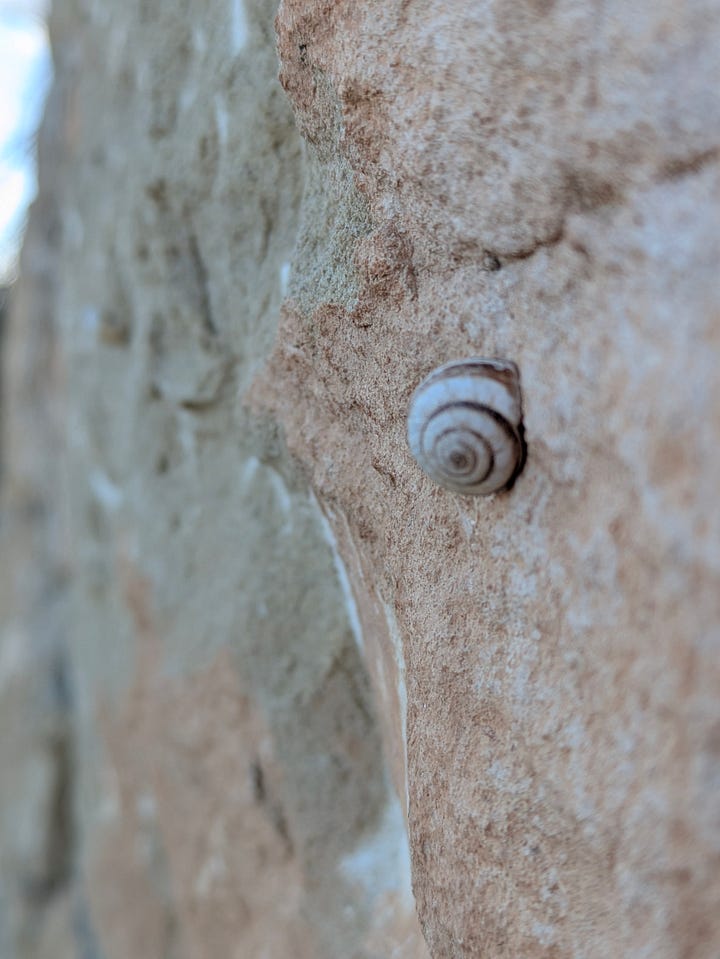
photos from sights along journaling walks and entries We hosted a guest for two whole weeks, and practiced our “scouting assistant” skills, as she is debating a move to Spain (or Greece or Italy. How do you choose?).
Attended the Barcelona Gallery Weekend, and met some wonderful artists and gallerists. It was a complete energy push to be surrounded by a big art event again, but this time as a newbie instead of a known reporter. Noticeable difference!
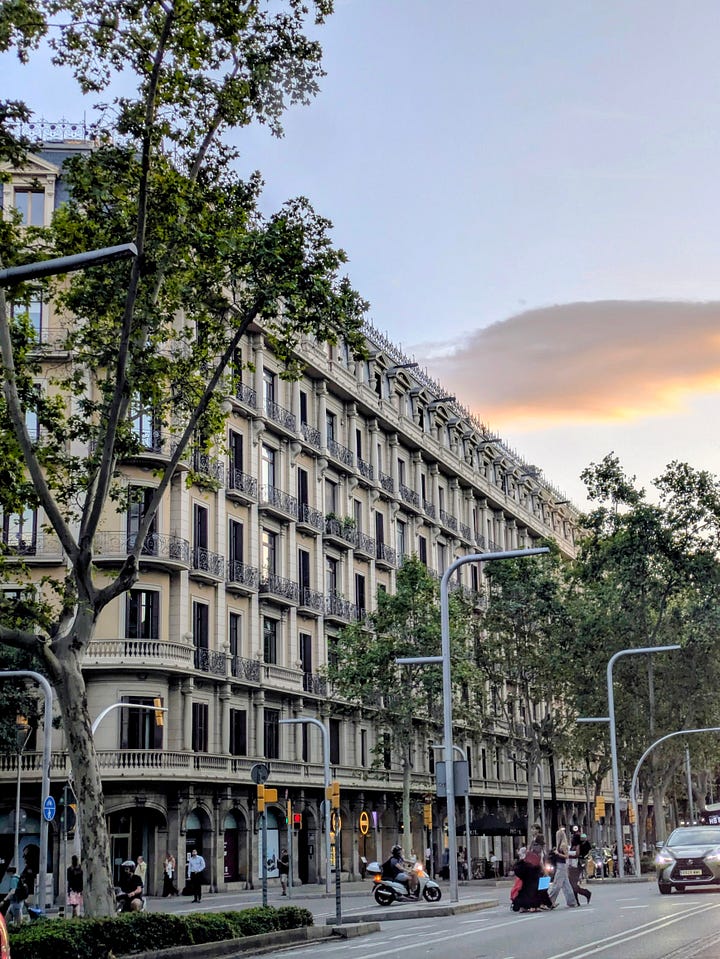
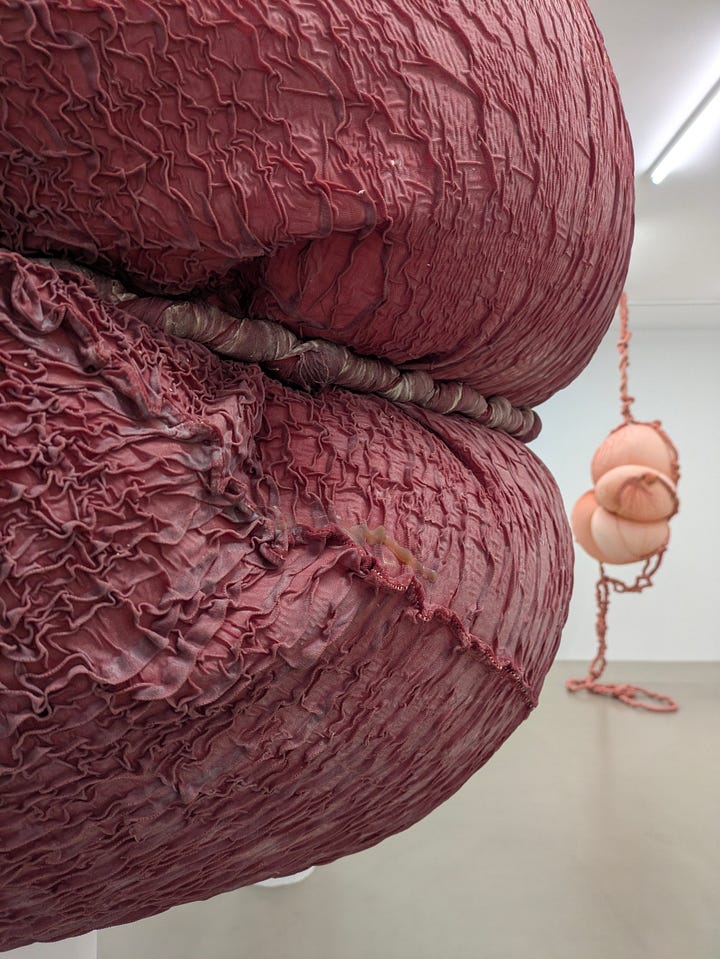
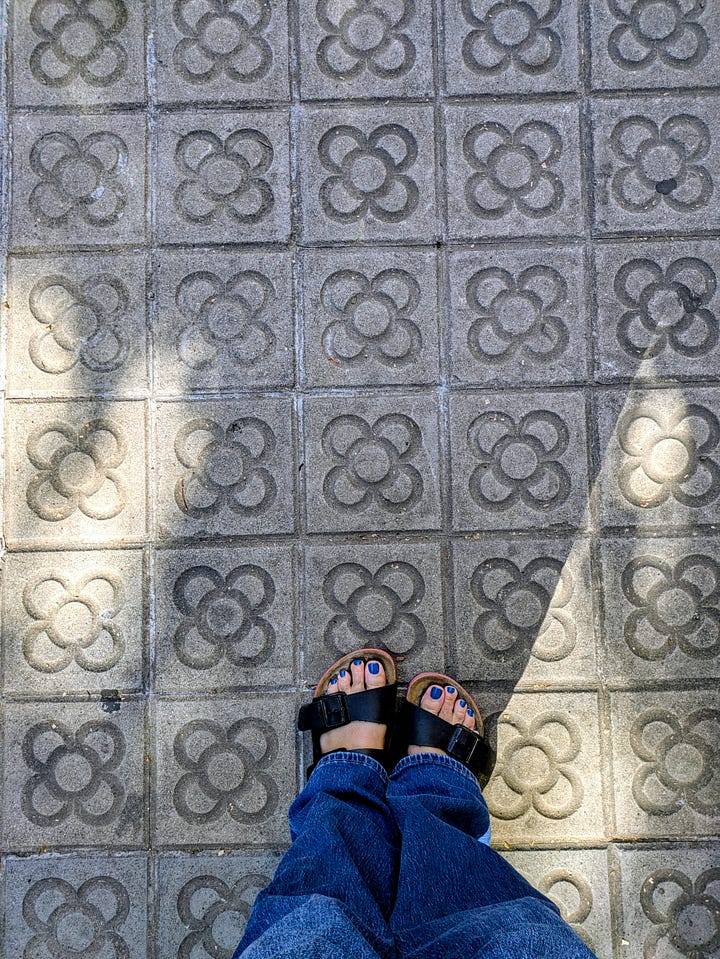
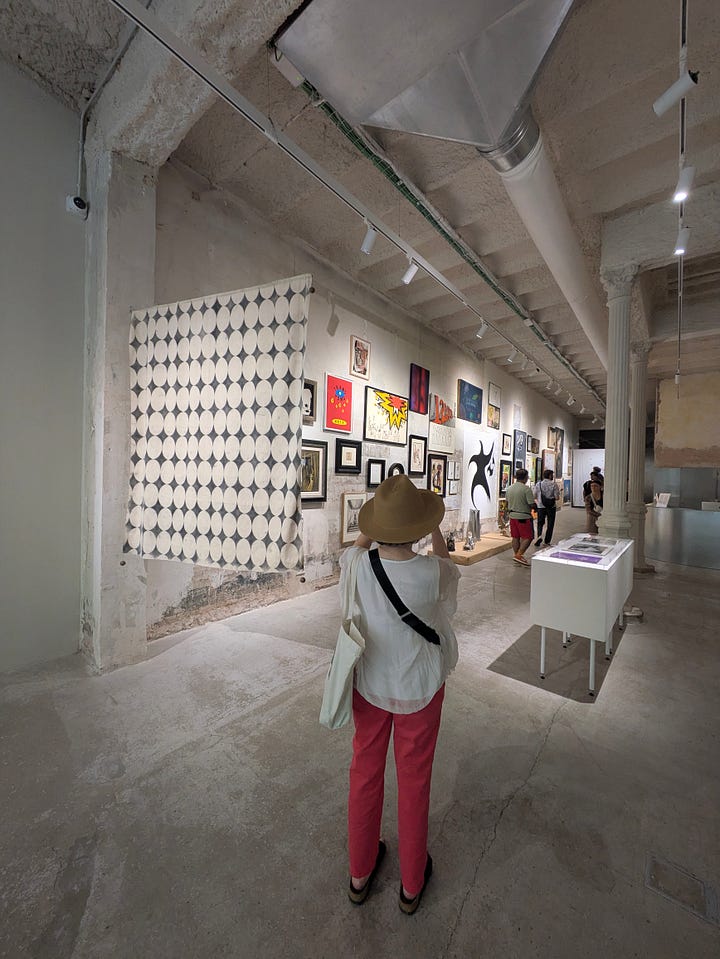
(clockwise) Barcelona architecture, Eva Fabrega at Bombon Gallery, Victoria at Mayoral, my toes and the iconic Barcelona sidewalk tiles
I made gazpacho and paella for said guest, and after having paella in a menu lunch, she proclaimed that mine was better. I’m still glowing from that compliment.
Harvested the last of the summer garden, including a huge pile of tomatoes, of which I am still finding ways to use up. May have discovered a new favorite: roasted tomatoes, onions, and garlic-with only good quality olive oil and salt. While still warm, pile it up on some good toasted bread. Consider adding some sort of cheesy goodness, whether it’s melted manchego or just a healthy schmear of cream cheese.
I finally explored Reus with the help of new friend Jeanne. Verdict: I love Reus. I liked it so much I brought our guest there for more exploring, including visiting the incredible, I mean incredible, Navas House. Did you know Reus has more Catalan Modernista architecture than Barcelona? And did you know Reus is the birthplace of vermouth? (De Reus, a Paris, a Londres, they say!) Two of my favorite things.
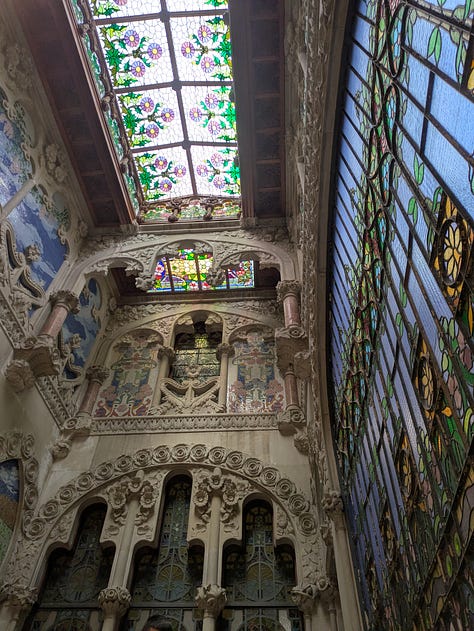
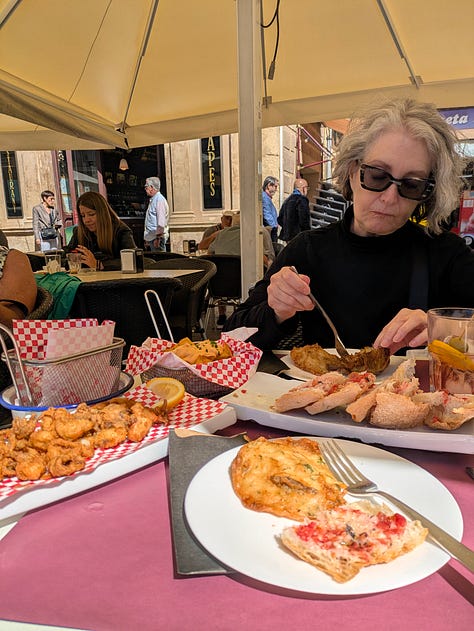
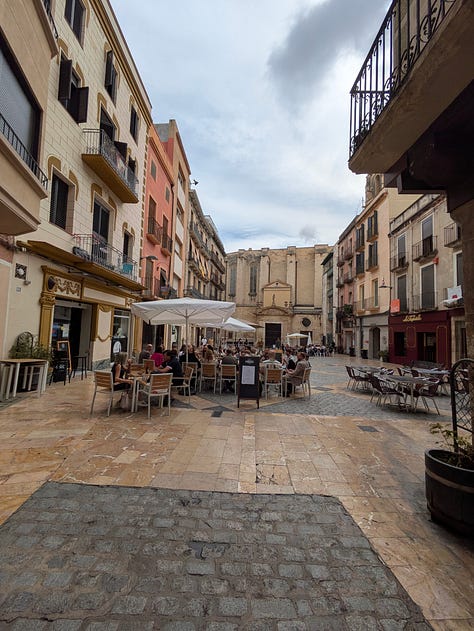
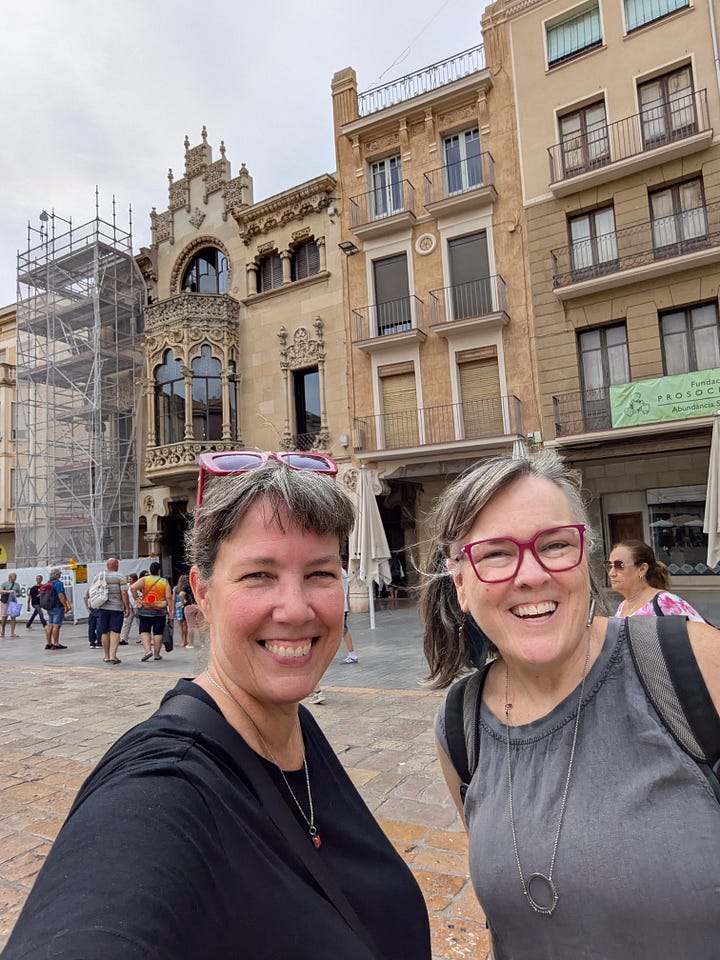
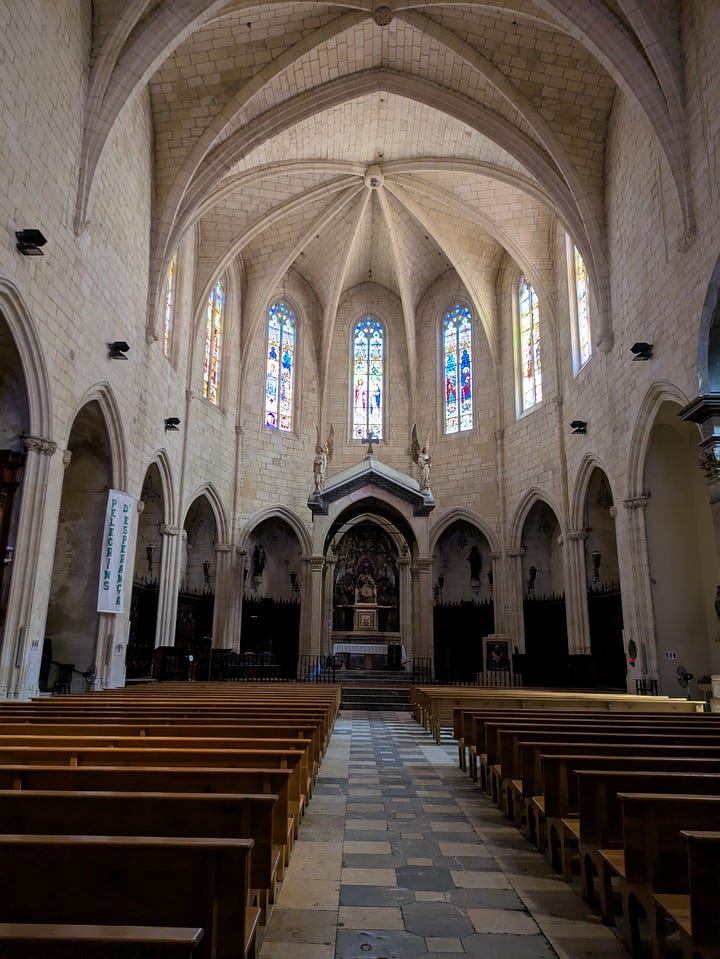
For the month of October, I will be sharing out some in-person and virtual creative journaling opportunities, planting rows and rows of onion and garlic, and a few fruit trees, and enjoying the last of the warm days here in Spain. Be sure to follow along on my Substack notes or on Instagram as I continue the 100 day challenge, as well!


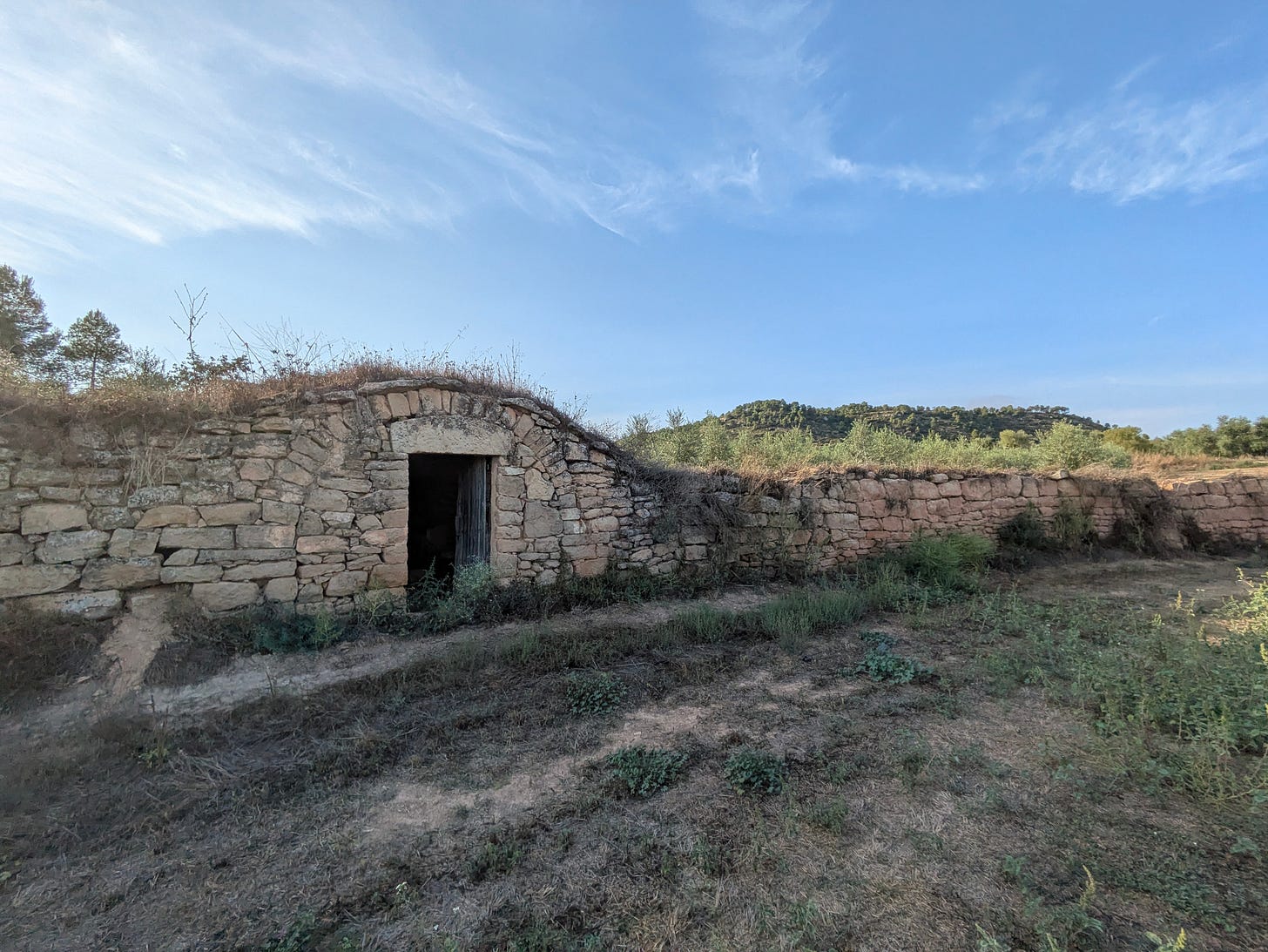

Love the Reus pics! There are still quite a lot of intact voltes around us including one just below our land/wall. I love finding them hidden (many in the spring have roofs covered in Iris) on walks off the beaten path and seeing their open mouths in the distance.